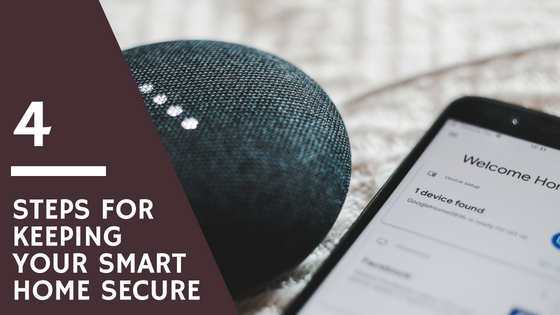Every time you shop for appliances, you probably see more internet-connected options. For sure, the internet of things (IoT) is rapidly becoming the new normal, making homes “smarter” every day. Almost every type of appliance has an option that allows you to connect that device to your phone or even other devices for ease of use.
However, all the new things in your house connecting to the internet can threaten your online security. While this issue might not seem like a big deal, there’s the risk of someone hacking into your network and stealing personal information. Here’s how you can improve your level of security and still enjoy the smart features of modern home life.
Protect networks
People who have smart devices have very little control over them. Although this may change in the future, right now, people have few effective options for protecting their televisions, refrigerators, smart speakers, and other IoT devices.
So, homeowners should secure their networks. This involves adding a secure password to wireless networks and configuring router-based firewalls. This also involves using all available security options within “smart” device settings. Still, users should operate with the assumption that hackers exploit “smart” devices to gain access to your personal data.
Segment IoT
Rather than using the default settings of a home router, people should create two separate networks: One to use with computers and smartphones and another to use with IoT devices. This way, when hackers compromise a home, they won’t have the ability to access sensitive personal information.
Users who have routers that don’t permit segmentation can still separate the IoT from their personal and professional lives by upgrading to a new router. As an alternative, users can always add a second router to their home for use only with “smart” devices.
Unified Threat Management
Although Unified Threat Management (UTM) devices are designed for business use, they will easily fit into smart homes. They monitor networks for intrusions, automatically adjust internet gateways, and guard against malware and viruses.
A UTM can work as a standalone device, but users should consider using a UTM together with other tactics such as network segmentation. By combining multiple initiatives, users can dramatically increase their security beyond their individual capabilities.
Use a VPN
After segmenting your network, connect your segments to the internet via a third-party VPN service. This will secure the traffic sent from between homes and internet providers (ISPs) and then assign you an anonymous IP address on the other side.
Although a VPN consumes some additional internet bandwidth, it helps you anonymize at least some online activities. Also, the robust encryption systems provided by VPNs can, by themselves deter hacker attacks.
In summary, it’s up to homeowners to recognize that the convenience of having “smart” devices in their home costs them dearly in terms of online security. However, by taking some practical steps, everyone can substantially reduce the risks associated with owning internet-connected appliances and devices.

